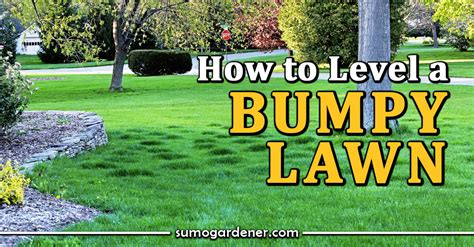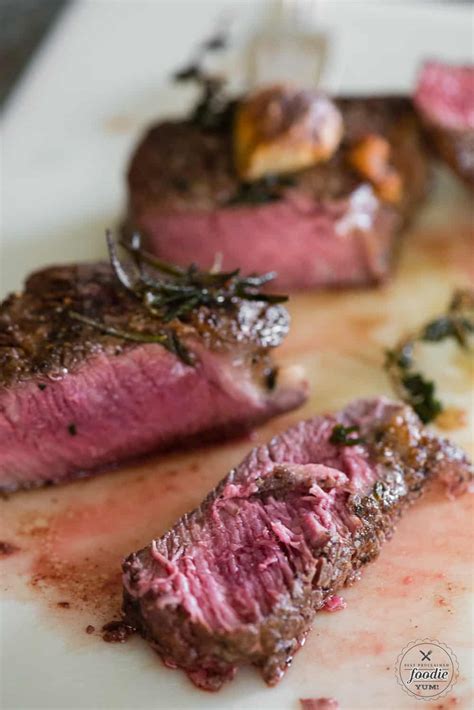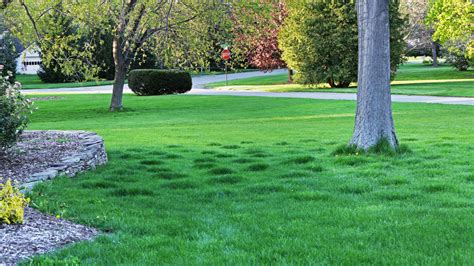
Leveling a bumpy lawn doesn’t require expensive machinery; a simple mix of sand, topsoil, and compost, coupled with the right tools and techniques, can restore a smooth, even surface for a fraction of the cost, improving both aesthetics and functionality.
Homeowners plagued by uneven lawns can achieve professional-looking results without resorting to heavy machinery, according to experts. The method involves a process called topdressing, which utilizes a carefully prepared mixture to fill in low spots and create a uniform surface. This approach, often more cost-effective and manageable than hiring professionals or renting equipment, is gaining popularity among DIY enthusiasts.
The key to success lies in the right combination of materials. A mixture of equal parts sand, topsoil, and compost is generally recommended. “The sand helps with drainage, topsoil provides nutrients, and compost adds organic matter,” explains a lawn care specialist quoted in several online forums dedicated to lawn maintenance. The specific type of sand is also important. Horticultural or builder’s sand is preferred over play sand, as the latter can compact and hinder drainage. Topsoil should be screened to remove rocks and debris, ensuring a smooth application. The compost component enriches the soil, promoting healthy grass growth.
The process begins with identifying the uneven areas. This can be done visually or by using a long, straight board or level to pinpoint depressions. Once identified, the grass in these areas should be mowed shorter than the surrounding lawn. This allows the topdressing mixture to make direct contact with the soil.
The topdressing mixture is then applied in thin layers, typically no more than half an inch at a time. This prevents smothering the existing grass. The mixture is spread evenly using a shovel or wheelbarrow and then raked smooth. A level lawn is achieved gradually, often requiring multiple applications over several weeks or months. “It’s better to do several thin layers than one thick layer,” experts advise. “This gives the grass time to grow through the mixture and avoids suffocating it.”
After each application, the lawn should be watered lightly to help the mixture settle and encourage grass growth. It’s important to avoid overwatering, which can lead to compaction and other problems. Regular mowing and fertilization should continue as normal, promoting a healthy and vibrant lawn.
This method is particularly well-suited for lawns with minor imperfections. For severely uneven lawns with large dips or mounds, more extensive renovation may be necessary. However, for the vast majority of homeowners, topdressing offers a simple, affordable, and effective solution to bumpy lawn blues.
Tools and Materials:
- Sand: Horticultural or builder’s sand is recommended for drainage.
- Topsoil: Screened to remove rocks and debris for smooth application.
- Compost: Provides nutrients and organic matter to enrich the soil.
- Shovel or Wheelbarrow: For transporting and spreading the mixture.
- Rake: For smoothing the mixture evenly.
- Lawn Mower: To mow the grass shorter in uneven areas.
- Water Hose or Sprinkler: For light watering after application.
- Straight Board or Level: To identify uneven areas (optional).
Step-by-Step Guide:
- Identify Uneven Areas: Visually inspect the lawn or use a straight board/level to locate dips and bumps.
- Mow the Grass: Mow the grass shorter in the uneven areas to allow the topdressing mixture to make direct contact with the soil.
- Prepare the Mixture: Mix equal parts of sand, topsoil, and compost.
- Apply Thin Layers: Spread the mixture in thin layers (no more than half an inch) over the uneven areas.
- Rake Smooth: Use a rake to evenly distribute the mixture and create a smooth surface.
- Water Lightly: Water the lawn lightly to help the mixture settle and encourage grass growth.
- Repeat as Needed: Repeat the process every few weeks or months until the lawn is level.
Addressing Specific Issues:
- Severe Unevenness: For significant dips or mounds, consider removing the existing turf, adding or removing soil as needed, and then replacing the turf or reseeding.
- Poor Drainage: Ensure proper drainage by incorporating more sand into the topdressing mixture or installing drainage systems if necessary.
- Compacted Soil: Aerate the lawn before topdressing to improve soil structure and drainage.
- Weed Control: Address weed issues before topdressing to prevent them from spreading.
- Soil Testing: Consider conducting a soil test to determine any nutrient deficiencies and amend the soil accordingly.
Benefits of Topdressing:
- Improves Drainage: Sand in the mixture helps to improve drainage, preventing waterlogging and promoting healthy root growth.
- Enriches Soil: Compost adds organic matter to the soil, providing essential nutrients for grass growth.
- Smooths Uneven Surfaces: Topdressing fills in low spots and creates a uniform surface, improving the aesthetics of the lawn.
- Promotes Healthy Grass Growth: By improving soil quality and drainage, topdressing promotes healthy grass growth and a vibrant lawn.
- Cost-Effective: Topdressing is a more affordable option compared to hiring professionals or renting heavy machinery.
- Environmentally Friendly: Using organic materials like compost helps to improve soil health and reduce the need for chemical fertilizers.
- DIY Friendly: The process is relatively simple and can be done by homeowners with basic tools and skills.
- Increases Curb Appeal: A smooth, even lawn enhances the overall appearance of the property and increases its curb appeal.
- Prevents Scalping: Leveling the lawn prevents scalping, which is the removal of too much grass when mowing, leading to brown patches.
- Creates a Safer Surface: A level lawn reduces the risk of trips and falls, making it safer for children and adults to enjoy.
Potential Drawbacks:
- Time and Effort: The process can be time-consuming, especially for larger lawns or those with significant unevenness.
- Multiple Applications: Achieving a perfectly level lawn may require multiple applications over several weeks or months.
- Material Costs: Although more affordable than professional services, there are still costs associated with purchasing sand, topsoil, and compost.
- Weed Seeds: Compost may contain weed seeds, which can introduce unwanted plants to the lawn. Ensure the compost is properly composted to kill weed seeds.
- Compaction: If the topdressing mixture is too heavy or applied too thickly, it can lead to soil compaction.
- Smothering Grass: Applying too much topdressing at once can smother the existing grass.
- Inconsistent Results: The results may vary depending on the quality of the materials used and the technique employed.
- Weather Dependent: The process is best done during periods of moderate weather, avoiding extreme heat, cold, or rain.
- Labor Intensive: Moving and spreading the materials can be physically demanding.
Choosing the Right Materials:
- Sand: Opt for horticultural or builder’s sand, which is coarser and provides better drainage than play sand. Avoid using beach sand, as it contains salt that can harm the grass.
- Topsoil: Choose screened topsoil that is free of rocks, debris, and large clumps. Avoid using subsoil, as it is nutrient-poor and compacted.
- Compost: Select well-decomposed compost that is dark and crumbly. Avoid using compost that is still actively decomposing, as it can burn the grass. Look for compost that is certified organic to avoid harmful chemicals.
Tips for Success:
- Start Small: Begin with a small area to practice the technique and assess the results.
- Use a Consistent Mixture: Ensure the sand, topsoil, and compost are thoroughly mixed to create a consistent topdressing mixture.
- Apply Thin Layers: Apply the mixture in thin layers to prevent smothering the grass.
- Rake Evenly: Use a rake to evenly distribute the mixture and create a smooth surface.
- Water Lightly: Water the lawn lightly after each application to help the mixture settle.
- Be Patient: Achieving a perfectly level lawn may take several applications over time.
- Monitor Grass Growth: Monitor the grass growth and adjust the topdressing schedule as needed.
- Fertilize Regularly: Fertilize the lawn regularly to promote healthy grass growth.
- Aerate the Lawn: Aerate the lawn annually to improve soil structure and drainage.
- Control Weeds: Control weeds before topdressing to prevent them from spreading.
- Mow Regularly: Mow the lawn regularly to maintain a healthy height.
- Seek Professional Advice: If you are unsure about any aspect of the process, consult with a lawn care professional.
Alternatives to Topdressing:
- Aeration: Aeration involves creating small holes in the soil to improve air circulation, drainage, and nutrient uptake.
- Overseeding: Overseeding involves spreading grass seed over the existing lawn to thicken the turf and improve its appearance.
- Sodding: Sodding involves laying pre-grown grass on bare soil, providing an instant lawn.
- Professional Lawn Leveling: Hiring a professional lawn care company to level the lawn using specialized equipment.
- Ground Cover: Replacing the lawn with ground cover plants that require less maintenance.
Cost Comparison:
- DIY Topdressing: The cost of DIY topdressing varies depending on the size of the lawn and the cost of materials. However, it is generally the most affordable option.
- Professional Lawn Leveling: Hiring a professional lawn care company to level the lawn can be expensive, but it may be necessary for severely uneven lawns.
- Sodding: Sodding is more expensive than DIY topdressing, but it provides an instant lawn.
- Aeration and Overseeding: Aeration and overseeding are relatively inexpensive options that can improve the health and appearance of the lawn.
- Ground Cover: The cost of ground cover varies depending on the type of plants used.
Environmental Considerations:
- Use Organic Materials: Use organic materials like compost to improve soil health and reduce the need for chemical fertilizers.
- Conserve Water: Water the lawn efficiently to conserve water.
- Reduce Chemical Use: Reduce the use of chemical pesticides and herbicides.
- Recycle Yard Waste: Recycle yard waste by composting it and using it as a soil amendment.
- Choose Drought-Tolerant Grass Species: Choose drought-tolerant grass species to reduce water consumption.
Maintaining a Level Lawn:
- Regular Mowing: Mow the lawn regularly to maintain a healthy height and prevent scalping.
- Proper Watering: Water the lawn properly to promote healthy grass growth.
- Fertilization: Fertilize the lawn regularly to provide essential nutrients.
- Aeration: Aerate the lawn annually to improve soil structure and drainage.
- Weed Control: Control weeds regularly to prevent them from spreading.
- Pest Control: Control pests as needed to prevent damage to the lawn.
- Topdressing: Topdress the lawn annually to maintain a level surface.
- Monitor for Problems: Monitor the lawn for any signs of problems and address them promptly.
By following these guidelines, homeowners can effectively level a bumpy lawn without the need for expensive machinery, creating a beautiful and functional outdoor space.
FAQ:
-
What is topdressing and how does it help level a bumpy lawn?
Topdressing is the process of applying a thin layer of material, typically a mixture of sand, topsoil, and compost, over the surface of a lawn to fill in low spots and create a more even surface. According to lawn care experts, “The sand helps with drainage, topsoil provides nutrients, and compost adds organic matter,” which collectively improves soil health and levels out minor imperfections in the lawn. Multiple applications may be needed to achieve the desired smoothness.
-
What is the ideal mixture for topdressing a lawn, and why are those specific materials recommended?
The recommended mixture for topdressing is typically equal parts of sand, topsoil, and compost. Horticultural or builder’s sand is preferred because it aids in drainage, preventing waterlogging. Screened topsoil provides essential nutrients for grass growth, and compost adds organic matter, enriching the soil and promoting a healthy root system. This combination creates a balanced environment that supports vigorous grass growth and a level surface.
-
How often should I topdress my lawn, and what is the best time of year to do it?
The frequency of topdressing depends on the severity of the lawn’s unevenness. For minor imperfections, topdressing once a year may suffice. For more significant bumps, applications every few weeks or months may be necessary. The best time of year to topdress is typically during the active growing season of the grass, usually in the spring or early fall. This allows the grass to recover quickly and grow through the topdressing mixture. “It’s better to do several thin layers than one thick layer,” advises a lawn care specialist, allowing grass to grow without being suffocated.
-
Can I use any type of sand for topdressing, or are there specific types I should avoid?
It’s crucial to use the right type of sand for topdressing. Horticultural or builder’s sand is recommended because it is coarser and provides better drainage than play sand. Play sand can compact and hinder drainage, leading to problems such as waterlogging and poor root growth. Beach sand should also be avoided due to its salt content, which can harm the grass.
-
What are some potential problems I might encounter when topdressing, and how can I avoid them?
Potential problems when topdressing include using the wrong type of sand, applying the mixture too thickly (which can smother the grass), and using compost that contains weed seeds. To avoid these issues, use horticultural or builder’s sand, apply the mixture in thin layers (no more than half an inch at a time), and use well-decomposed compost that is free of weed seeds. Additionally, avoid topdressing during extreme weather conditions such as heat waves or heavy rain. Ensure proper watering after each application to help the mixture settle and encourage grass growth. Consider aerating the lawn before topdressing to alleviate compaction. Monitoring the grass growth and adjusting the topdressing schedule as needed will also help ensure successful results.



![Massive Motorcycle Recall: [Manufacturer] Pulls Back Nearly 100K Bikes!](https://generasitekno.com/wp-content/uploads/2025/06/unnamed-file-727-150x150.jpg)





